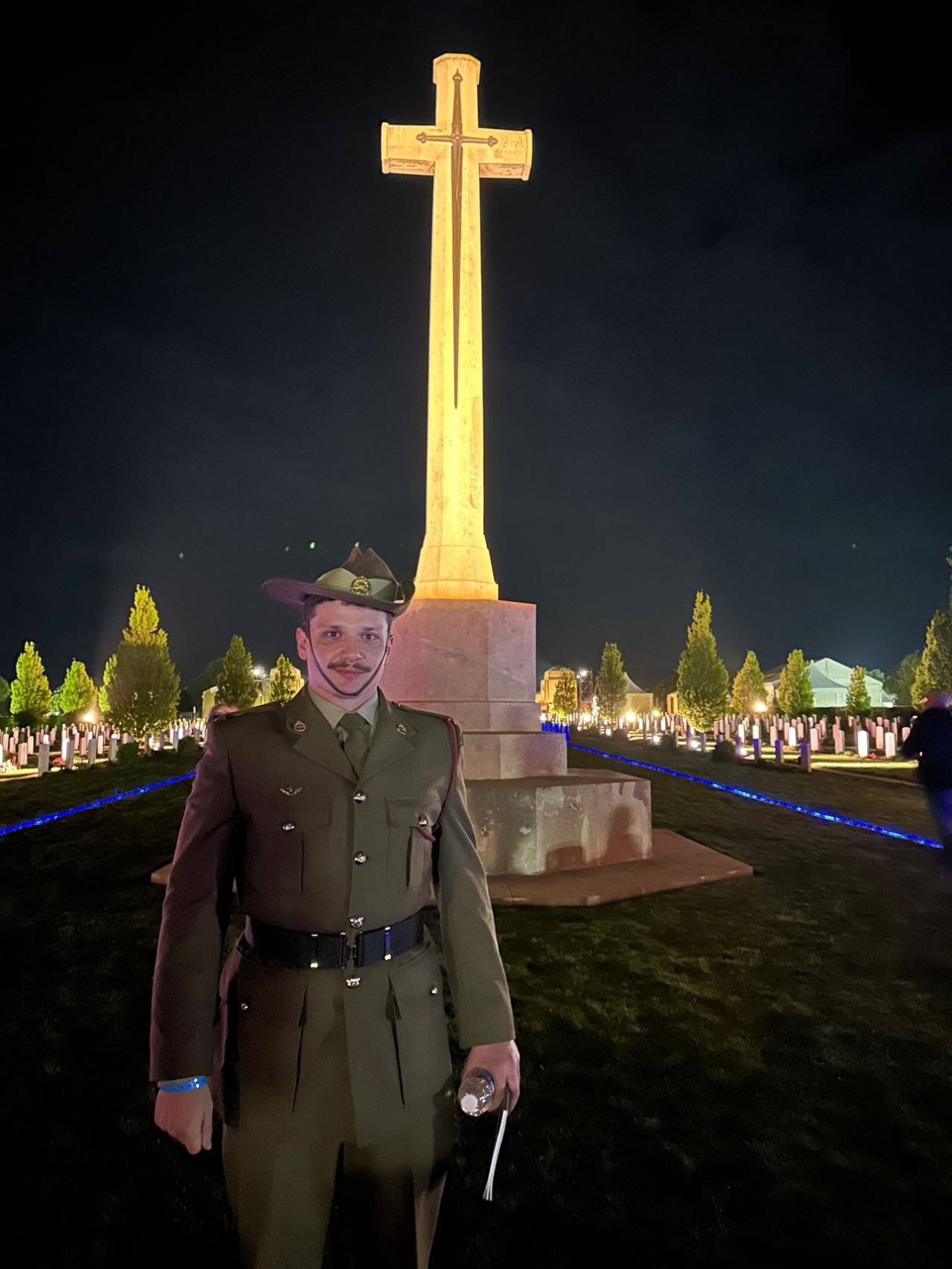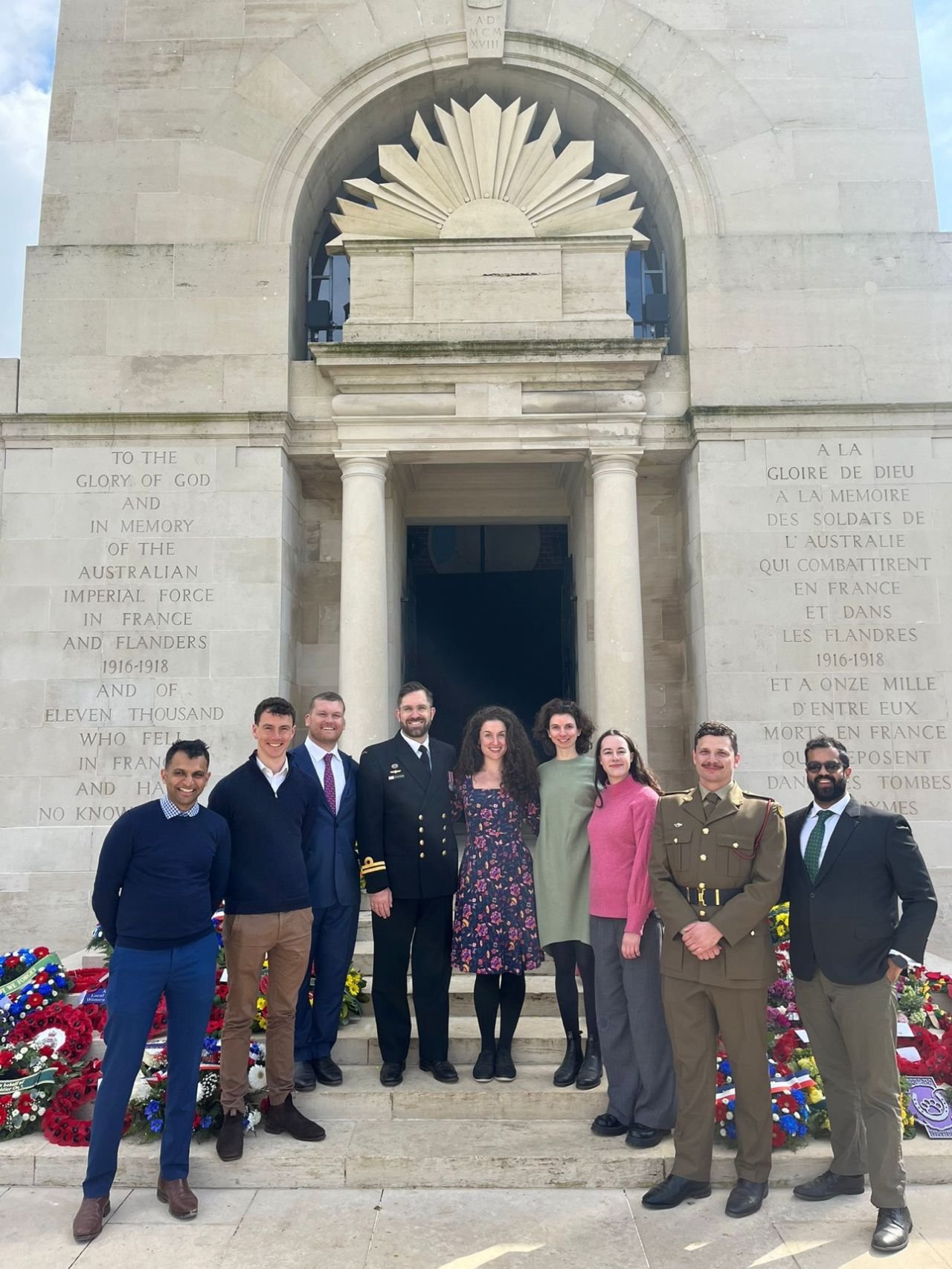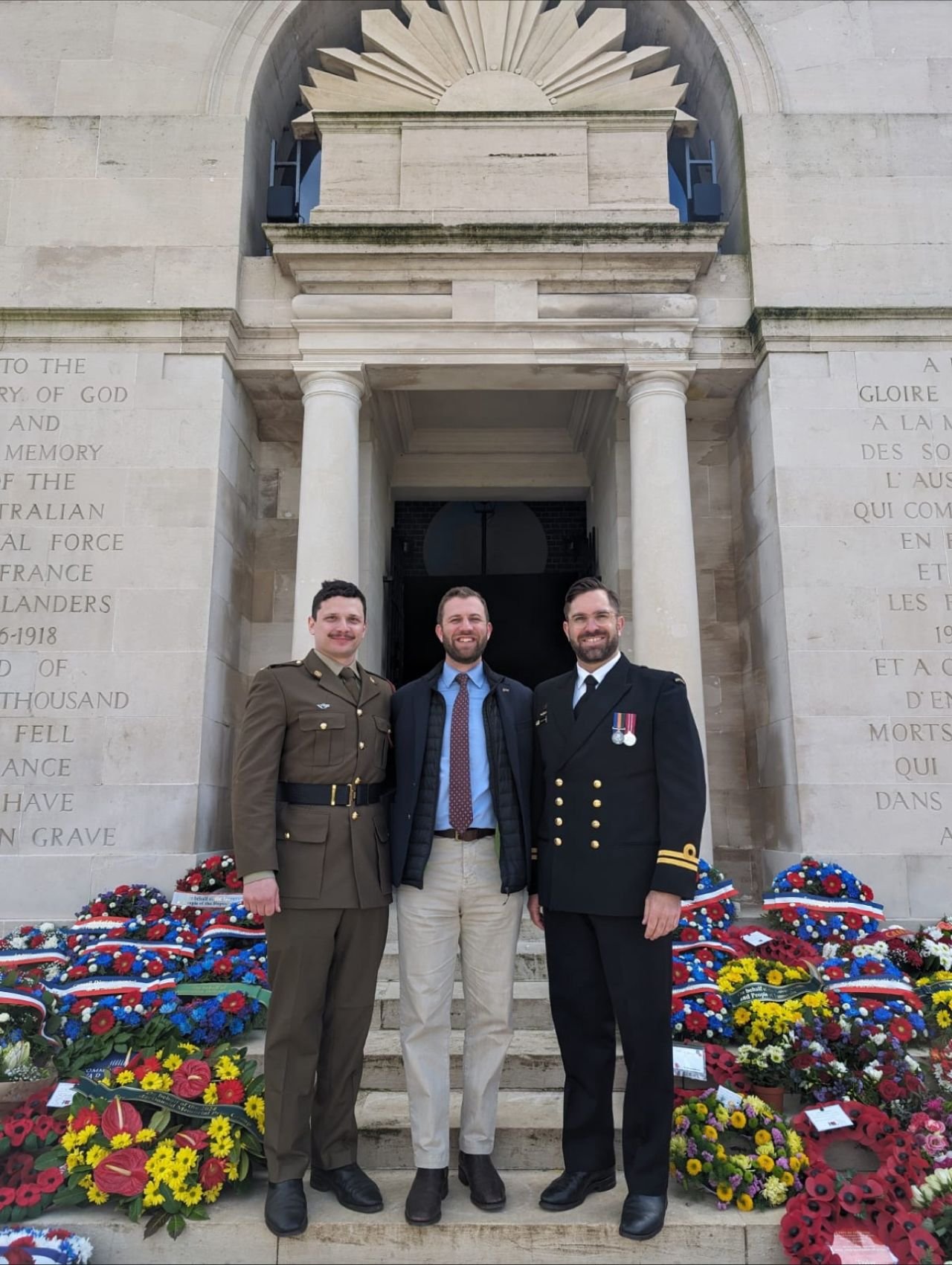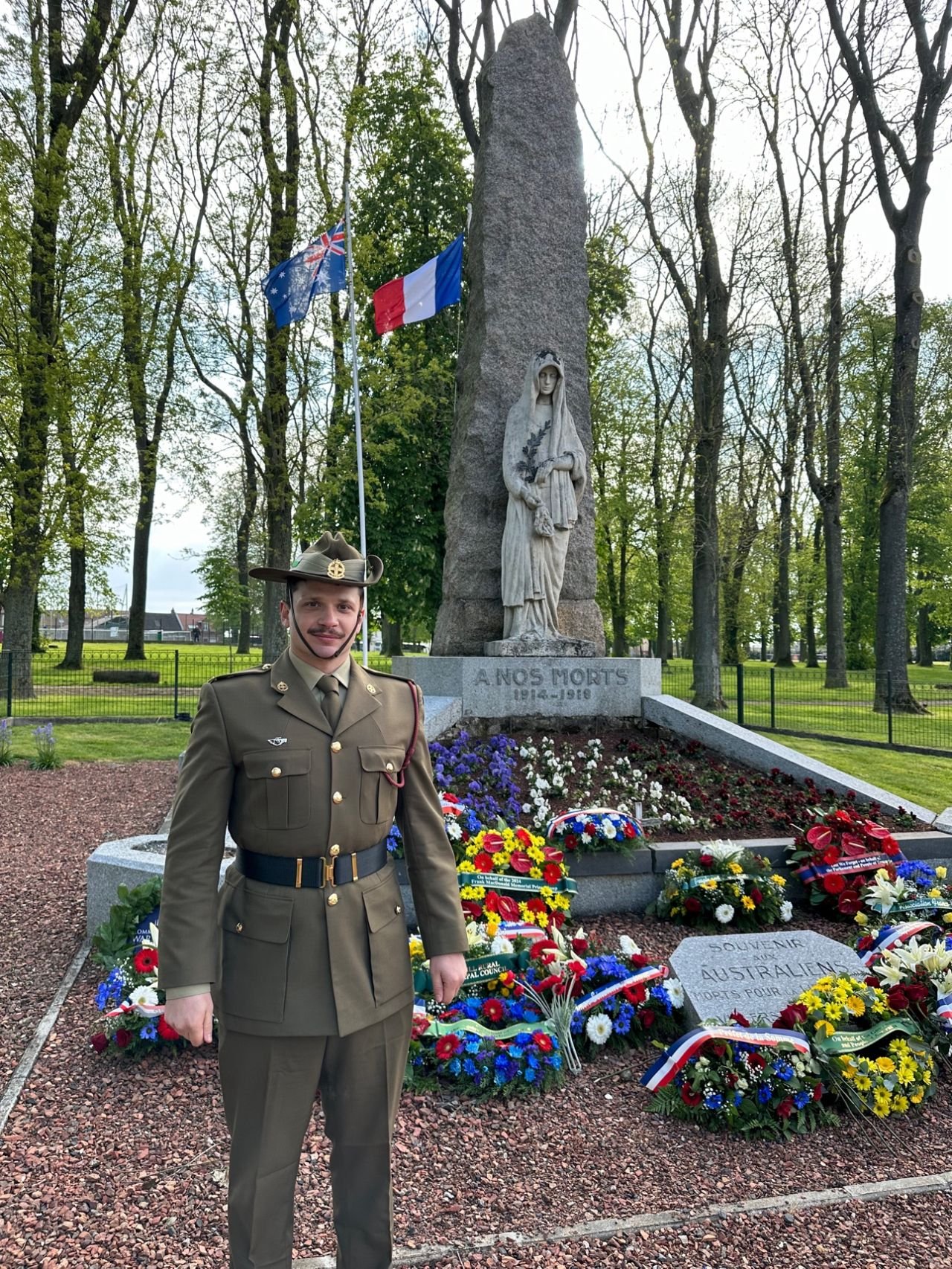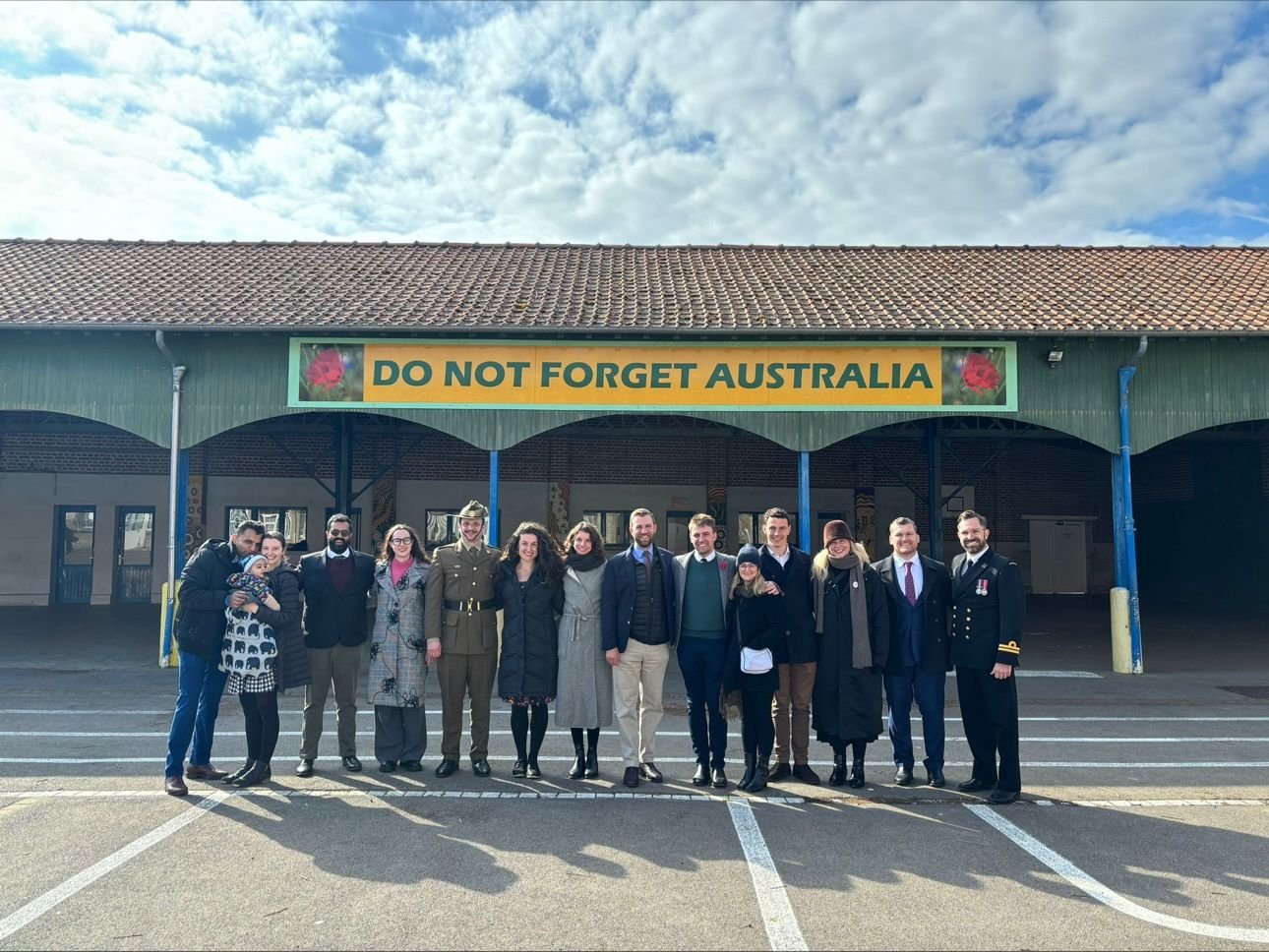‘Their name liveth for evermore’, Villers-Bretonneux
It was a great privilege to attend the ANZAC Day dawn service last week at the Australian National Memorial in Villers-Bretonneux, northern France, with a delegation of Australian students and General Sir John Monash Foundation scholars from across the UK.
In Australia, we grow up learning of the sacrifices, bravery, and lost innocence of Anzac soldiers in the First World War. The Anzac legend has become part of our founding national identity, in addition to the early 20th century Australian achievements such as federation, suffrage for women, and distinct Australian architectural styles, literature, and art.
It was extraordinary to see the memory and sacrifices of the Anzacs honoured 106 years later, with senior members of the French and Australian militaries and governments delivering moving addresses. The town of Villers-Bretonneux – liberated by the Australian forces in 1918 – is a living memorial to the sacrifices of Australia, with streets named after Australian cities (“Rue de Melbourne”), and the local school named “L’Ecole Victoria – the Victoria School” bearing a sign with the injunction “do not forget Australia”.
The visit took on a personal significance for me, having recently discovered the historical records detailing my great, great uncle’s service in the Great War. Lance Sergeant John Herbert Greco left his life and young family behind in Queensland to join the war effort. He fought and was injured in Gallipoli. He then returned to the Western Front, and saw combat in Bullecourt and Pozieres, names and battles etched into history. He was killed in action on 5 April, 2018 in the first battle of Villers-Bretonneux, aged 32, the exact age I am today.
His remains were never recovered and no grave marks his final resting place. He is one of the 10,719 Australian casualties who died in France with no known grave. His entry in the Australian war Museum simply reads that his resting place was “believed to be somewhere near Amiens”.
“Believed to be somewhere near Amiens”
It was therefore deeply moving to walk through the peaceful fields surrounding Villers-Bretonneux and Amiens - once battle-ravaged landscapes pockmarked by shells and scarred by trenches – and to imagine John Herbert Greco at rest somewhere beneath the canola flowers.
Amiens, looking like the Ukrainian flag
We were also fortunate to visit the John Monash Centre and its moving and immersive exhibits outlining the horrors of the conflict – mechanised and industrialised warfare, the “storm of steel” and chemicals, and the loss of innocence.
Thank you to the brilliant Leut Matthew Newman for coordinating and leading such a meaningful delegation. Long may the association between the John Monash Foundation and the John Monash Centre continue.
Lest we forget.
